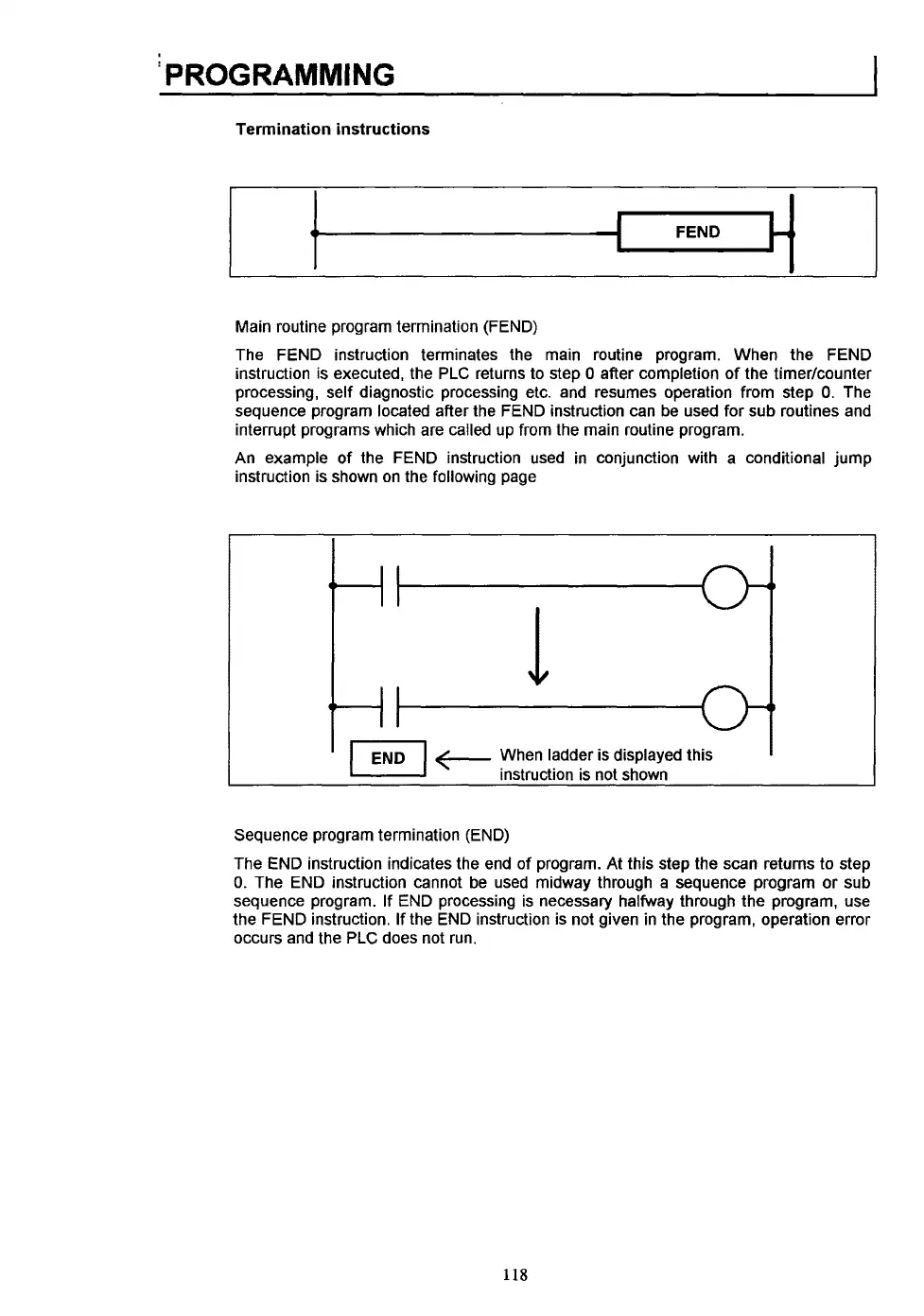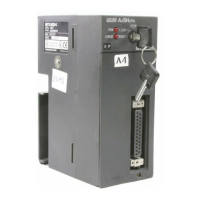'PROGRAMMING
41
Termination instructions
FEND
Main routine program termination (FEND)
The FEND instruction terminates the main routine program. When the FEND
instruction is executed, the
PLC returns
to
step
0
after completion of the timerkounter
processing, self diagnostic processing etc. and resumes operation from step
0. The
sequence program located after the FEND instruction can be used for sub routines and
interrupt programs which are called up from the main routine program.
An example of the FEND instruction used in conjunction with a conditional jump
instruction is shown on the following page
i
'
<-
When ladder is displayed this
I
instruction is not shown
Sequence program termination (END)
The END instruction indicates the end
of
program.
At
this step the scan returns
to
step
0.
The END instruction cannot be used midway through
a
sequence program
or
sub
sequence program. If END processing is necessary halfway through the program, use
the FEND instruction.
If
the END instruction is not given in the program, operation error
occurs and the
PLC
does not run.
118

